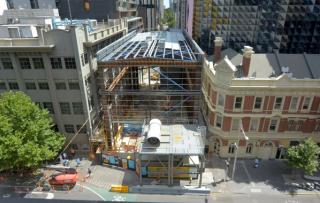
Multidisciplinary support for Amber Valley Borough Council’s Local Plan
- Client Name
- Amber Valley Borough Council (AVBC)
- Location
- Europe

Challenge
Amber Valley Borough Council (AVBC) has prepared a new Local Plan which sets out a vision and a framework for the future development of the borough up to 2040 and includes policies and proposals to address needs and opportunities in relation to housing, the economy, community facilities, and infrastructure, as well to safeguard the environment. SLR was instructed to prepare the Local Plan’s Habitats Regulations Assessment (HRA), which provided information to inform an Appropriate Assessment for a number of potential environmental effects, including air quality.
Following an initial screening of the potential for air quality effects at a total of seven European designated conservation sites, it was determined that detailed atmospheric dispersion modelling was required. However, after it was identified that the necessary traffic data could not be extracted from the Local Plan’s Transport Assessment, and following consultation with Natural England regarding the potential options for assessing air quality impacts, we suggested that SLR’s in-house Transport Modelling team could be instructed to generate the required information. Critically, the supplementary traffic information needed to be collected (i.e. surveyed) and modelled rapidly in order for the Local Plan to meet a pressing consultation deadline. A challenge overcome by the availability of in-house transport modelling expertise within SLR.
Solution
The transport modelling built upon the existing Local Plan Transport Assessment and utilised TEMPro growth factors, Census Journey to Work data, Census Output Area (MSOA level) classifications and the SLR-developed Routing Tool (specifically developed to support Local Plan traffic modelling using TRACC), to derive distribution and trip rate estimates for each of the Local Plan site allocations. TRACC is a travel time analysis software that can utilise road network data to determine routes from origin points to destination points. These routes can be produced for a variety of different transport modes, in the case of the work for Amber Valley vehicular car travel was selected.
Each Local Plan site was assigned a distribution based on Census Journey to Work (JtW) data. The centroids of the sites were input into TRACC as ‘destination’ points and the centroids of the JtW Medium Super Output Areas (MSOAs) were input as ‘origin’ points. This allowed for car-based Origin-Destination (OD) calculations to be completed for trips both inbound and outbound to the site.
Each of these OD routes are plotted against the road network and were combined with the trip generation data to assign traffic volumes to the road network links. This information was then used to determine the total number of trips across the study area for the Local Plan allocations.
The air quality modelling exercise combined the use of the in-house traffic information, local meteorological data, roadside pollution monitoring data, modelled background concentration data and atmospheric dispersion modelling software to predict pollution levels, for various scenarios, at the conservation sites of concern.
Impact
The air quality assessment conclusions formed a basis for the agreement with Natural England that the Local Plan would not pose a significant threat to the surrounding European conservation sites, either alone or in-combination with other plans and projects. Subsequently, the HRA document was completed and submitted to AVBC in time for the formal consultation process. The current aim is for the Local Plan to be formally adopted by 2025.
This project highlights the significant benefits SLR can offer to clients in finding solutions to their environmental and sustainability challenges, through cutting-edge expertise across multiple disciplines and streamlined delivery. This work represents the continued involvement of our sustainability experts in the provision of services to support regional strategic-level Local Plan development.

